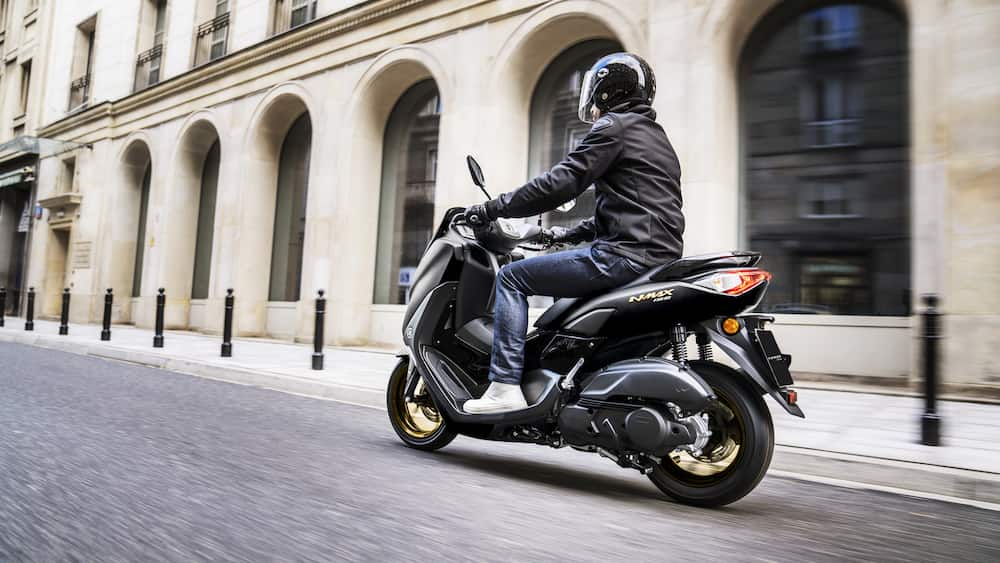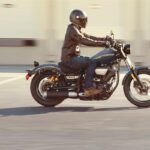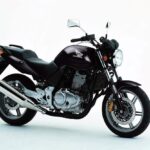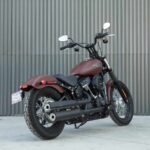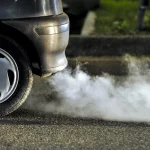The Yamaha NMAX is a popular entry-level scooter that was introduced in 2015. It is designed to provide a smooth and comfortable ride, with a focus on urban mobility. The Yamaha NMAX has quickly become a favorite among riders due to its fuel efficiency, practicality, and easy handling.
Contents
Importance of Learning Yamaha NMAX Riding Techniques
As with any motorcycle or scooter, it is important to learn the proper riding techniques for the Yamaha NMAX. This will not only help riders feel more confident and comfortable on the road but also improve safety and reduce the risk of accidents.
Related
What You Will Learn
The purpose of this article is to provide a comprehensive guide to Yamaha NMAX riding techniques. It will cover everything from basic riding techniques to more advanced maneuvers and safety tips.
By following the advice in this article, riders will be able to enjoy their NMAX to the fullest while staying safe and responsible on the road.
Pre-Ride Check-up
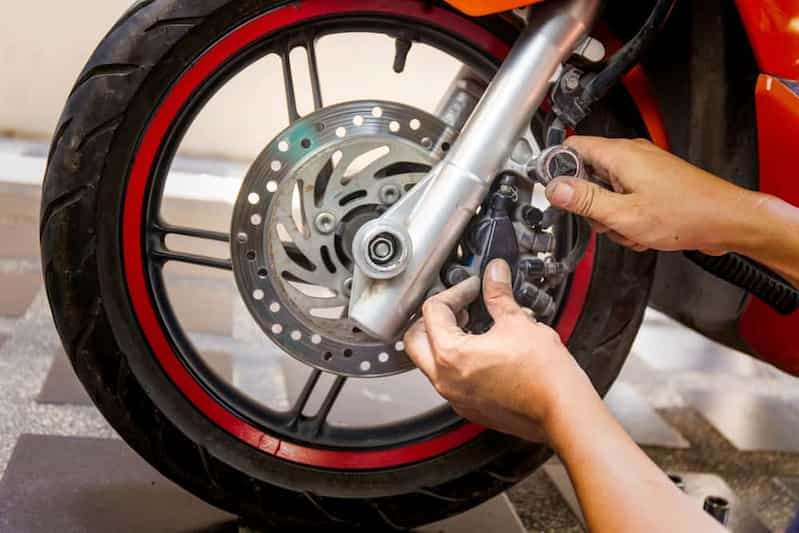
Ensuring that your Nmax is in good condition and safe to ride is crucial before embarking on a journey. Conducting a pre-ride check-up is a crucial step to ensure that your motorcycle is in optimal condition.
In this section, I will discuss the importance of conducting a pre-ride check-up and provide step-by-step guidance on how to do it.
How to Conduct a Pre-Ride Check-up
I always make sure to conduct a thorough pre-ride check-up before taking my Yamaha NMAX out for a ride to ensure that it’s in good condition and ready for the road.
Tires
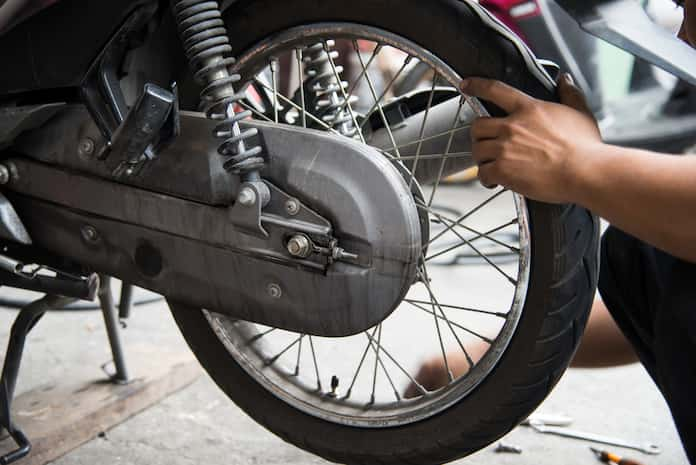
Check the condition and pressure of your tires. Make sure they are not worn out or damaged, and inflate them to the recommended pressure.
Brakes
Test your brakes to ensure they are working properly. Check the brake pads and discs for wear, and make sure the brake fluid level is sufficient.
Lights
Test all of the lights on your Nmax, including the headlights, taillights, brake lights, and turn signals. Replace any bulbs that are not working.
Oil and Fuel
Check the oil and fuel levels in your scooter. Make sure there is enough fuel for your trip, and that the oil level is within the recommended range. If necessary, top up the oil or fuel before heading out on the road.
By conducting a pre-ride check-up, you will be able to identify any issues with your Yamaha NMAX before they become a problem. This will help ensure a safe and enjoyable ride every time you take your scooter out on the road.
Basic Riding Techniques
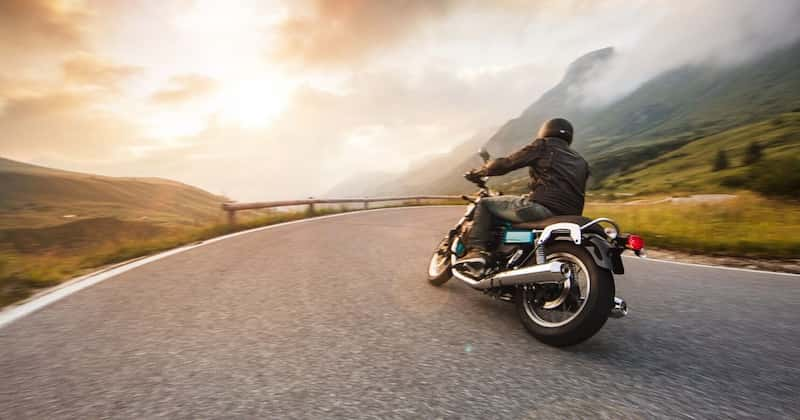
In this section, I will cover the proper sitting position, how to use foot and hand brakes, the accelerator, rearview mirrors, and changing gears. By understanding and practicing these fundamental skills, you can improve your riding experience and stay safe on the road.
Proper Sitting Position
One of the most important aspects of riding a Yamaha NMAX is maintaining the correct sitting position. This involves sitting upright, with your feet flat on the footrests, and your hands on the handlebars. This will help you maintain balance and control over your scooter.
Use of Foot Brakes and Hand Brakes
The Nmax is equipped with both foot brakes and hand brakes. The foot brake is located on the right-hand side of the scooter, while the hand brake is located on the left-hand side. It is important to use both brakes together to slow down or stop the scooter effectively.
Use of Accelerator
The NMAX motorcycle is equipped with a throttle, which is used to control the speed of the scooter. To accelerate, simply twist the throttle towards you. To decelerate, release the throttle.
Use of Rearview Mirrors
Nmax is equipped with two rearview mirrors, which are located on the handlebars. These mirrors should be adjusted before riding to provide the best view of the road behind you. It is important to check your mirrors regularly while riding to stay aware of your surroundings.
Changing Gears
It is also equipped with an automatic transmission, which means that gears are changed automatically. However, riders can still manually change gears by using the left-hand thumb lever to shift up and the left-hand index finger lever to shift down.
Advanced Riding Techniques
If you are an experienced Yamaha NMAX rider looking to take your skills to the next level, mastering advanced riding techniques is the way to go.
In this section, I will discuss cornering techniques such as counter-steering, body position, braking techniques, overtaking techniques, lane filtering, and riding in different weather conditions.
Cornering Techniques

Cornering is an important skill for Nmax riders to master. This involves using counter-steering, body position, and braking techniques to navigate turns safely and smoothly.
Counter-Steering
Counter-steering involves pushing on the handlebars in the opposite direction of the turn to initiate a lean. This will help you turn more quickly and smoothly.
Body Position
Your body position can also affect your ability to corner safely. Try to keep your body relaxed and your weight centered over the scooter while turning.
Braking Techniques
Braking techniques can also help you navigate turns more safely. Use the rear brake to slow down before entering a turn, and then release it as you lean into the turn. Use the front brake gently to maintain control while turning.
B. Overtaking Techniques
Overtaking other vehicles safely is an important skill for Yamaha NMAX riders. This involves accelerating quickly and passing other vehicles on the left-hand side of the road.
C. Lane Filtering
Lane filtering is a technique used by Yamaha NMAX lovers to navigate through traffic more efficiently. This involves riding between lanes of slow-moving or stopped vehicles but should be done cautiously and safely.
Riding in Different Weather Conditions
Riding in different weather conditions can be challenging for motorcycle enthusiasts. Here are some tips for riding in various weather conditions:
Riding in the Rain
Reduce your speed and maintain a safe distance from other vehicles. Use the brakes gently and avoid sudden movements to maintain control.
Riding in the Wind
Be aware of crosswinds, which can affect your stability. Try to ride in the middle of your lane and avoid sudden movements.
Riding in Extreme Temperatures
In extreme temperatures, it is important to stay hydrated and wear appropriate clothing. Avoid riding during the hottest parts of the day and take breaks as needed.
By mastering these advanced riding techniques, NMAX riders can enjoy a safer and more enjoyable riding experience.
Safety Tips
Safety should be the top priority for Yamaha NMAX motorcyclists. By following safety rules and using protective gear, bikers can reduce the risk of accidents and injuries.
Helmet Wearing
Wearing a helmet is one of the most important safety measures for Yamaha NMAX enthusiasts. A good quality helmet can protect your head from serious injuries in case of an accident. Make sure to choose a helmet that fits properly and meets safety standards.
Protective Gear
In addition to a helmet, bikers should wear protective gear such as gloves, boots, and jackets. This gear can provide additional protection in case of an accident.
Being Aware of Surroundings
Yamaha NMAX motorcyclists must always be aware of their surroundings. This involves frequently monitoring the road ahead and inspecting the mirrors to remain aware of other vehicles and potential hazards.
Riding Defensively
Riding defensively means anticipating potential hazards and taking steps to avoid them. This involves maintaining a safe distance from other vehicles, slowing down in areas with poor visibility, and avoiding distracted driving.
Maintenance Tips
Regular maintenance is important to keep your Yamaha NMAX running smoothly and to ensure your safety while riding. It is important to follow the manufacturer’s maintenance schedule and perform routine checks.
Cleaning and Lubricating the Chain
The chain is an important component of the Yamaha NMAX, and it needs to be cleaned and lubricated regularly to ensure smooth operation. Use a chain cleaning brush and a lubricant to keep the chain in good condition.
Regular Oil Changes
Regular oil changes are essential to keep the Yamaha NMAX engine running smoothly. Check the owner’s manual for the recommended oil change interval and use the recommended oil type.
Checking and Maintaining Tire Pressure
Proper tire pressure is important for safety and performance. Check the tire pressure regularly and use a tire pressure gauge to ensure that the pressure is within the recommended range.
Conclusion
If you own a Yamaha NMAX, mastering Nmax riding techniques is essential for a safe and enjoyable riding experience. By following the safety rules, practicing basic and advanced riding techniques, and performing regular maintenance, you can ride with confidence and peace of mind.
Remember to always prioritize safety, wear proper protective gear, and be aware of your surroundings while riding. With these skills and habits, you can enjoy the thrill and freedom of riding your Yamaha NMAX while staying safe on the road.
Kamran Hussain is a motorcycle enthusiast and expert with over 5 years of experience in the industry. As a seasoned rider, he has a deep understanding of the motorcycle market and is dedicated to helping riders find the best bikes and gear to suit their needs.
Kamran Hussain has written extensively on motorcycle topics, including buying guides, product reviews, and maintenance tips. With his comprehensive knowledge of the industry, he is a trusted source for motorcycle enthusiasts seeking reliable information and advice.
